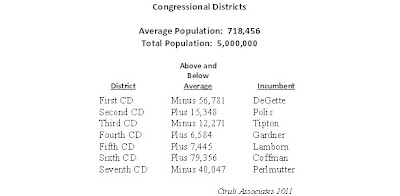“Now our nightmare is over. Now is the time to dream.”
A hero of the Egyptian revolution, Wael Ghonim, a 31-year-old Egyptian Google executive, whose Facebook helped propel the Internet-linked activist by social media and modern branding said, “Eighty-five million people live in Egypt, and less than 1,000 people died in this revolution. It shows how civilized the Egyptian people are.” He was threatened and held prisoner for two weeks to stop his blog. But, Mr. Ghonim is optimistic – “Now our nightmare is over. Now it is time to dream.”
Now, we all wait to see the result.
• The Egyptian revolution began January 25, on a day set aside to remember an Arab police revolt against British colonial rule, and ended on February 11, the day after Hosni Mubarak’s disastrous February 10 speech. The Tunisian government fell 11 days earlier on January 14. So, in less than thirty days, two regimes fell. Egypt’s only took 18 days.
• The Egyptian and Tunisian activists who most fueled the revolutions were part of a pan-Arab youth movement mostly born after 1990 and the wars and regime changes that shaped the current Middle East politics. In Egypt, the last major confrontation was a general strike in April 2008. The antecedents of the young organizers had been working on the effort for six years, but much of their work was hidden on the blogosphere.
• The younger children of old dictators appear more out of touch than their fathers. Gamal Mubarak encouraged his father’s slow and unresponsive hard line, including his fatal final speech. Saif al-Islam Gadhafi’s defense of his father’s regime is as bizarre as most of Moammar al-Gadhafi’s speeches. He took the lead in declaring women and children would die if Libyans didn’t bend to the will of his father.
• Ideas related to nonviolent, youth organizations, use of social networks and modern marketing techniques were imported, shared and infused into the youth organizations. From Serbian youth activists’ success stories to reclusive American political scientist Gene Sharp’s nonviolent theories, Arab youth borrowed, studied and argued best practices. Their nonviolent resistance undermined the legitimacy of the War on Terror techniques that old regimes were using to suppress their own oppositions. Another effective display of the asymmetry of warfare.
• The revolution brought many grievances and groups in Egyptian society together. Mr. Ghonim was most motivated by police brutality, and featured it on his website, “We are all Khalid Said” – the victim of a police beating. Some working and lower class participants were motivated by the poverty and lack of opportunity and others in the educated classes by the class conscience from a socialist perspective.
The dislike and primitiveness of state-run media was a factor as was the general resentment of the corruption and privilege of the ruling class. And, of course, the Muslim Brotherhood was a late player looking for its place.
• Mubarak was gone as soon as he became the one thing all the protests and protestors could agree on – from corruption, to no jobs, to anti-American and anti-Israeli sentiment, to police brutality – all complaints converged on wanting Mubarak out. Of course, it helped that he played his limited hand so poorly and that there was one institution available to fill the void without stifling the promise of reform – the army.
• The events, which produced the most drama and best visuals – the five-hour battle for the Kasr-el-Nil Bridge on January 28 and the Mubarak supporters’ counterattacks on January 29 in Tahrir Square – helped the protesters and hurt the regime. The thugs helped de-legitimize the regime as the protestors remained undefeated, but mostly nonviolent. The thugs also finally activated youth elements of the very disciplined Muslim Brotherhood to weigh in.
• In the fast moving national crisis nearby regional powers, such as Saudi Arabia, Israel and Iran, and great powers, such as the U.S. and Britain, were mostly observers. Saudi Arabia and Israel preferred stability and current arrangements. The U.S. wanted a peaceful and measured transition. At various times, the U.S. appeared to be on the side of both the revolution and the establishment. In the end, events took over and the transition was abrupt, but at least for now, stable with some known players (the army), but not a clear process.
See articles:
New York Times:
A Tunisian-Egyptian Link that Shook Arab History
Newsweek:
Wanted: A Grand Strategy for America











